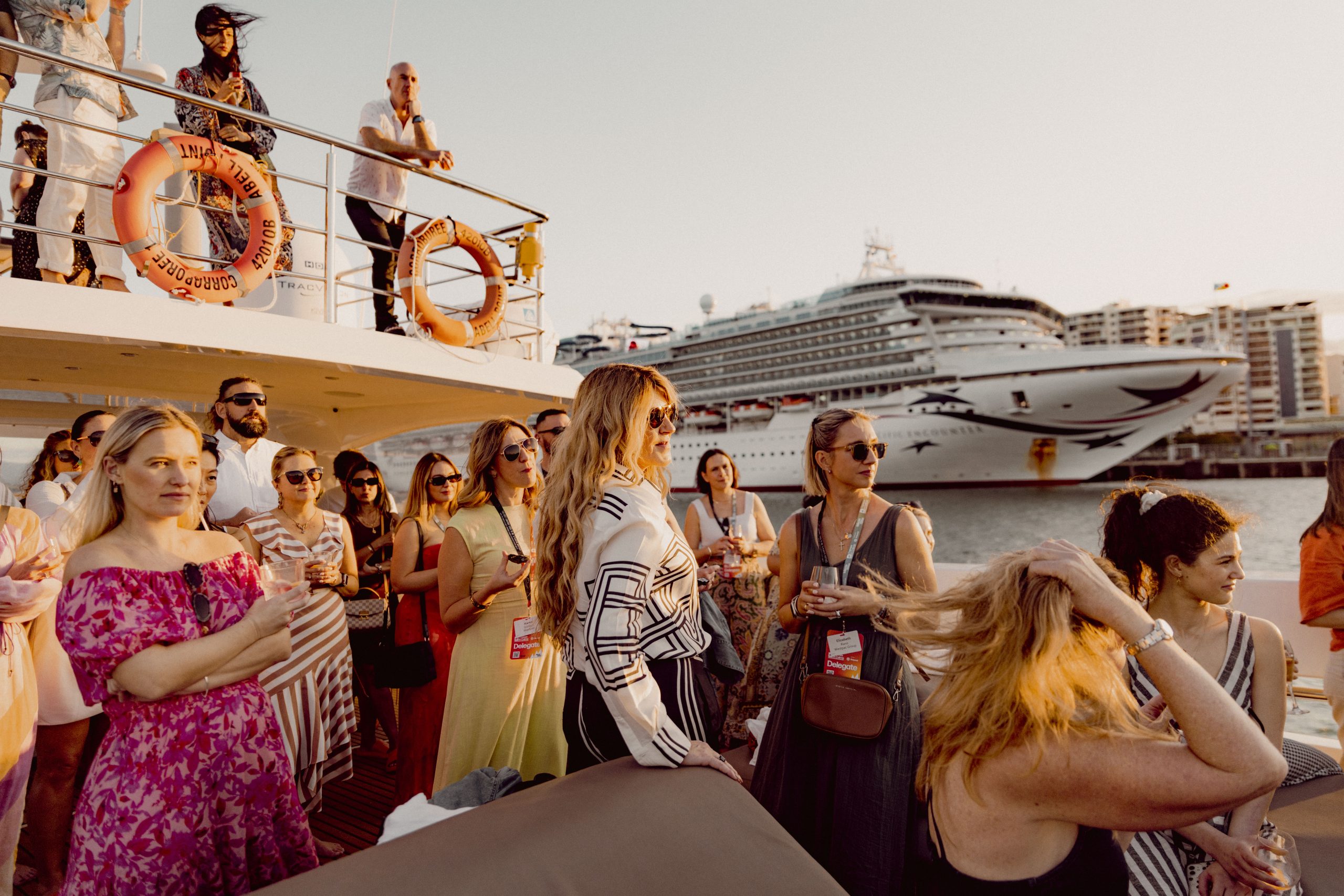So you’ve come home from a conference with stacks of business cards, fun memories of wine-soaked evenings and promises to keep in touch with newfound friends. That sense of bonhomie, however, is rudely shaken when the boss asks you to produce a list of really useful contacts from the event, and when reviewing the collaterals, you find actually very few of those names represent commercial potential for your company. Suddenly, you realise a golden opportunity has slipped through your fingers. What went wrong? The experts Mix interviewed unanimously agreed – you didn’t do your homework.

Get a must-meet list
Communications guru and veteran speaker Leslie Choudhury (www.lesliechoudhury.com) remarks: “Effective networking can be done in either a social or business environment; one can lead to the other. But what is important is to have a definite purpose for attending. Why are you there? What are you trying to achieve? Who do you have to meet to achieve this goal?”

Choudhury, who admits always having his “radar up” regarding the types he wants to engage with, urges people to “have a vision of who you want to meet and why you want to meet them”. This makes for efficient use of one’s time, rather than wandering aimlessly around the function room.
Before attending a business event, it is good practice, he suggests, to ask organisers to furnish a list of speakers and participants, which might provide the names of must-meet individuals. Choudhury says established trade shows are doing a good job of creating dynamic marketplaces, but some of the smaller business events need to study how to add more value to their operations with effective networking activities. “Perhaps, when people sign up, they can also tick off from a list in one word what they’re interested in. That way, people can be matched.”
Graeme Barnett, exhibition director of mega business events show EIBTM (www.reedexpo.com) observes that it is assumed people know how to network. “That’s not always the case. Previously, it was thought if you went away with a load of business cards, you had succeeded in fulfilling your mission. People tended not to think too deeply about who they wanted to meet to develop business relationships, and were left [by organisers] to just get on with it. But these days, networking is recognised as needing a different skill set. More events are being structured so they add value to the attendance of participants.”
Aware that delegates may need a bit of help coming out of their shell in crowds, Barnett requires members of his staff to mix and facilitate introductions. He adds: “Also learn to maximise your own contacts. Ask them to introduce you around.”

Create optimal networking
The networking exercise, however, does not take place in a vacuum. One professional, who has been promoting the development of better-designed business events, is Maarten Vanneste. In 2008, he published Meeting Architecture, a manifesto that outlined his vision of creating a discipline to design meetings and events with a format and content, focused on achieving clearly defined client objectives (www.meetingarchitecture.com).
As head of production and audio-visual outfit Abbit, Vanneste was exposed to the challenges faced by his meeting planner clientele, regarding staging the “perfect” showcase. “For me, they have been a constant stimulation for ideas,” Vanneste notes. “Most of them were too busy attending to the logistics of moving participants, feeding them and housing them, that they didn’t have a lot of time to think about how to run a better meeting or improve the networking portion. Of course, they could organise a nice lunch, dinner or cocktails, but networking is much more complicated than bringing people together over a meal or drinks.
“We all recognise a party is fun and we all like to eat and drink, but playing loud music or giving your guests alcohol could be the worst thing you could do [for their productivity]. This is not a conducive environment for people to get to know each other better, so if we are serious about networking, we need to do other stuff to improve it.”
Vanneste, who was honoured by the Meeting Professionals Institute (MPI) for his seminal work and helping events experts increase their relevance and impact in the marketplace, intends to bring his fledgling movement (that advocates for the creation of a discipline to design meetings) to educational institutions, which could develop relevant syllabuses. Groups interested in the topic have been formed in the US, Denmark, Brazil and Belgium, where Vanneste is based. “We can also be found on LinkedIn and Facebook,” he says.

Keep in touch
Our experts likewise remind us that once the door is opened, it should not be left ajar too long or it just might slam shut. Says popular facilitator Choudhury: “Email, SMS or call, and if you feel the contact can lead you on a definite pathway, be specific in your follow-up message.”
Capitalise on social media channels such as Facebook and LinkedIn, urges EIBTM’s Barnett, who finds them to be excellent platforms “to supplement” the face time you had together at the show.
So before you head off for your next networking session, think hard about your moves. As the old chestnut goes, there is no such thing as a free lunch.
“Networking is much more complicated than bringing people over a meal or drinks. We need to do other stuff to improve it ” Maarten Vanneste
“Also, learn to maximise your own contacts. Ask them to introduce you around the show ” Graeme Barnett
“ Why are you attending this event? What do you want to achieve? Who do you have to meet to achieve this goal?” Leslie Choudhury
THE PERFECT SPACE
For meetings consultant Maarten Vanneste, the ballroom remains the “perfect” venue to organise networking that makes an impact. “It’s flat; it’s big; and you can put in any kind of furniture or screen for the activity you plan,” he says.
InterContinental Hong Kong agrees wholeheartedly with his assessment. During an evening bash celebrating its 10th anniversary last month, the popular hotel unveiled the new look and feel of the InterContinental Ballroom, the stage of many of the city’s high-profile corporate and social affairs in the past. Taking advantage of the presence of top corporate clients, meeting planners, supporters and media, the events team spared no effort to showcase the product’s enhanced design features and refreshed hosting potential.
Australian mixologist Ben Davidson was flown in for the night, providing the entertainment at the eye-catching circular central bar in the pre-function area, as he and the hotel’s bartenders concocted the signature Nine Dragon cocktail – inspired by the Legend of the Nine Dragons of Kowloon – and other drink requests from guests who milled around the unusual installation. Other focal points included a 2.4-metre-high, multi-tiered chocolate cake slathered in 24-carat gold leaf and a 2.5-metre-high champagne fountain, consisting of 500 glasses of the new house bubbly, Perrier-Jouët.
To ensure guests managed to view all parts of the ballroom, four food stations – featuring the chefs and cuisines of the hotel’s signature restaurants, including celebrity chef Nobu Matsuhisa – were positioned in different locations around the room. Picking out different delicacies helped people to mingle and reduced the chances of crowd build-up in one place.
Having been pillarless from the start, the ballroom continues to boast a spacious ambience and few problems with traffic flow. But with its new aesthetic motif of concentric circles, waves and sunset hues (inspired by InterContinental Hong Kong’s Victoria Harbour-front location), and state-of-the-art technology, this iconic facility has just received a second wind and is ready to operate at full speed again.
When strangers become friends
For its long-running client Melbourne Convention and Visitors Bureau (MCVB), event management specialist, Off-Site Connections (www.offsiteconnections.com)made sure their recent China roadshow featured ample chances for travel suppliers from Down Under and local product buyers to interact. In Shanghai, the MCVB hosted a gala dinner, preceded by cocktails, at The Ritz-Carlton Shanghai, Pudong hotel.
Upon registering, buyers were given a card, which they had to fill up with a number of stickers to be eligible for a lucky draw promising desirable travel prizes. To win a sticker, they had to engage suppliers in conversation, and not just exchange business cards. David Ong, Off-Site’s general manager for China, says: “Everyone loves to win something, so people were very enthusiastic about completing the task.”
At dinner, two sellers were assigned to sit with eight prospective buyers during the appetiser, after which they moved on to another table for the main course and then do so again for dessert. This allowed the seller to speak at length with at least four people, the two buyers on his left side and the other two on his right, while he exchanged business cards with the rest of the table’s occupants. Ong says: “You will never get the right arrangement, but at least, sellers covered about half of their table. It was a start.”
For many multinational companies, aligning thousands of employees with their prevailing culture or corporate vision can be daunting. This is where organisational development consultants like Manila-based TIME Haus (www.timehaus.com) come in with their expertise.
One of its many clients, J P Morgan Philippines, which has four business lines, boasts a workforce of 14,000. “How do you expect them to get to know each other?” remarks Vic Eduave, TIME Haus chief executive. One of the solutions was a two-and-a-half day boot camp – described by Eduave as “a speed networking process” – consisting of up to 400 participants, including top management.
The fact that attendees came from different “ LOBs or lines of business”, Eduave stresses, provided opportunities “for cross-functional networking”.
For Chevron executives from Manila and the US, a tour of Bohol in southern Philippines included a number of challenges – related to their travel experience – that encouraged team members to learn about each other while accomplishing their respective briefs. Discussions and review took place along the way in pit stops, or places where the group would rest from their efforts. TIME Haus facilitators were with the teams through every stage of the journey.
Says Eduave: “These activities have to be tied up with an organisational imperative (ie objective). The trip was not just about having fun, but because our programmes are really out-of-the-box, people still enjoy themselves and learn through the experience.”


